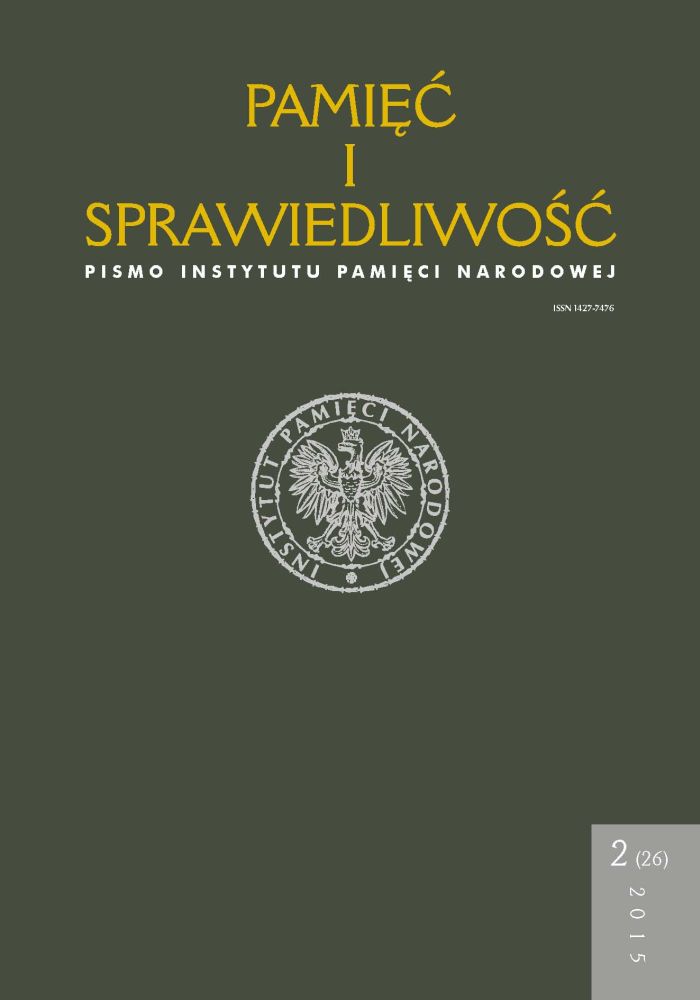Od Komitetu Rewolucyjnego do Konferencji Samorządu Robotniczego. Próby budowy samorządności
robotniczej po Październiku ’56 na przykładzie Zakładów Mechanicznych „Tarnów”
From the Revolutionary Committee to the Conference of Workers’ Self-Government. The attempts to develop the workers’ self-governance after October 1956 on the example of “Tarnów” Mechanical Plants
Author(s): Michal WenklarSubject(s): Political history, Social history, Post-War period (1950 - 1989)
Published by: Instytut Pamięci Narodowej
Keywords: October 1956; workers’ self-government; workers’ councils; Tarnów; Security Services
Summary/Abstract: One of the more important elements of changes after October 1956 was the establishment of the workers’ self-government. Revolutionary committees and workers’ council were spontaneously developing in larger work plants. In November 1956, the Act on workers’ council was adopted. The real role of workers’ councils is illustrated by the example of the Temporary Revolutionary Committee (TKR) and then the Workers’ Council of the Mechanical Plants in Tarnów. The Committee, declaring the will to fight for the interests of the crew and full democratisation of TKR, was established on 2 November 1956 and took part in making decisions concerning the situation in the city and district by sending their representatives to meetings of Party’s committees and national councils, as well as to rallies taking place in other work plants. In agreement with the councils of the two remaining large of plants in Tarnów, it pushed its own candidate for the chairman of Presidency of the City National Council (PMRN) and had influence on the layout of list of candidates to the Sejm from Tarnów. The first decisions of TKR in the plant were personal. A number of employees, usually members of the PZPR who were accused of “Stalinist” practices in the plant, were dismissed or reappointed to lower-level positions. The Soviet advisor and officers of the Military Section of Security Services were removed. On 20 December of 1956 in elections organised by TKR the Workers’ Council was selected, led by the current activists of the Committee. The Council intervened in the matters most important for workers – employee apartments, firewood allocation, unjust dismissals, shifts or deprivations of bonuses. The activity of the Committee and the Council met with a counteraction on the part of the authorities. Their leaders received letters with threats and as the thaw came to an end in the city they were dismissed from their positions in the party. Finally, the chairman of the Council was forced to resign. The Security Services infiltrated the Council and initiated operational cases against some of its members. The most active workers were removed from the plant. Simultaneously, the statutory role of councils were limited and subordinated to the Party and trade unions. This was achieved by the establishment in April 1958 of the Conference of Workers’ Self-Government and adopting the new act on workers’ self-government in December 1958. The example of Mechanical Plants, first of all, demonstrates the scale of the impact the councils had on the events taking place in the plant during the thaw and on transformations in local authorities, and secondly, it provides information on methods used to limit self-governance of workers’ councils.
Journal: Pamięć i Sprawiedliwość.
- Issue Year: 28/2016
- Issue No: 2
- Page Range: 211-231
- Page Count: 21
- Language: Polish

